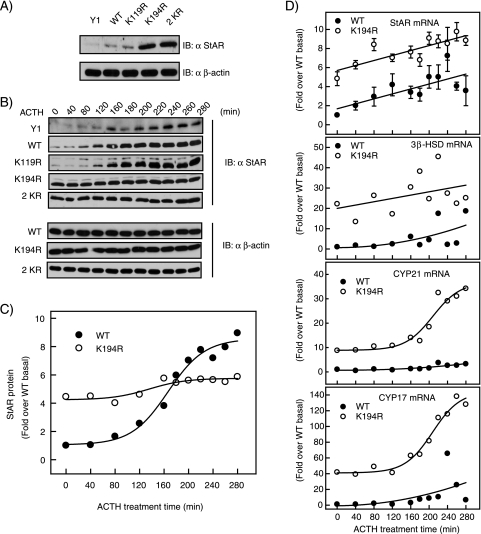FIG. 7.
Loss of SF-1 SUMOylation increases the mRNA and protein levels of multiple steroidogenic-enzyme genes. (A) Lysates of Y1 cells (1 × 106) stably expressing the indicated forms of SF-1 (without ACTH treatment) were subjected to anti-StAR (top) and anti-β-actin (bottom) immunoblotting (IB). (B) Stable Y1 cell lines (1 × 106) were serum deprived for 48 h and treated with ACTH (10 nM) for the indicated times. Whole-cell lysates were prepared and subjected to anti-StAR immunoblotting or anti-β-actin immunoblotting. (C) The WT and K194R immunoblots for anti-StAR shown in panel B were quantified using a Bio-Rad phosphorimager. (D) Y1 cells (1 × 106) stably expressing WT HIS-FLAG SF-1 or K194R were treated with ACTH for the indicated times. Total RNAs were extracted from the cells, reverse transcribed, and amplified by quantitative PCR with GAPDH as an internal control. The data are presented as amounts over the RNA levels in WT HIS-FLAG SF-1 cells at time zero. Each point represents the average of three experiments, each with triplicate samples. After a 280-min incubation with ACTH, WT-HIS-FLAG SF-1-expressing cells displayed 3.5-, 18.8-, 3.2-, and 6.5-fold increases in StAR, 3β-HSD, CYP21, and CYP17 mRNAs, respectively. The error bars indicate standard errors.

